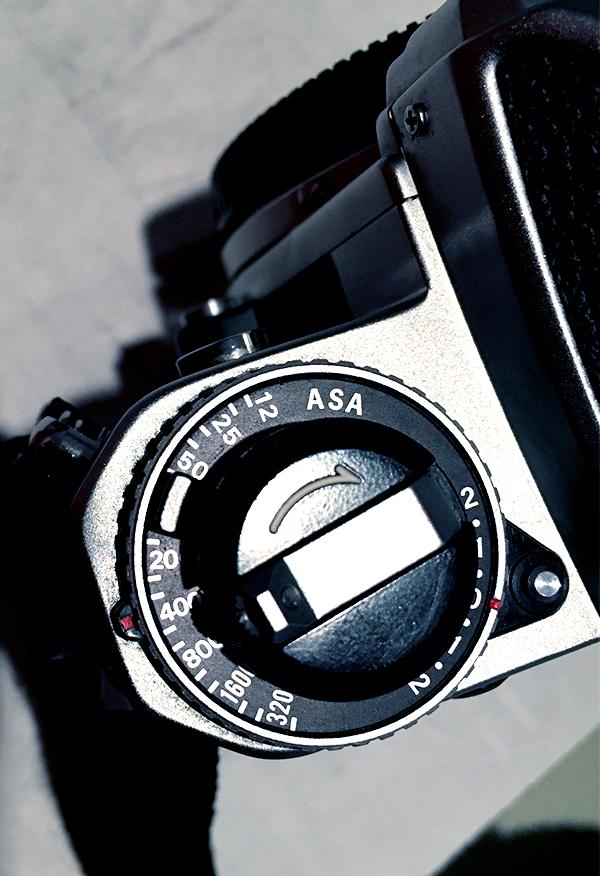The Truth About ISO, ASA, Film Speed, Noise and Fast Cars
I don’t know much about fast cars except that nine times out of 10, the one in front of me on the NY State Thruway is not fast. However, I would like to share something about ISO and why making a reasoned choice of ISO setting is preferable to leaving the dial on Auto (or on 3200).
The CMOS or CCD imaging sensor in your camera is designed to perform optimally when light is at a certain level. For the convenience of photographers who are accustomed to understanding the different sensitivity levels of photographic film, most manufacturers build sensors that have roughly the same base sensitivity as a roll of ISO 100 film. To keep everything as familiar and understandable as possible, camera makers use a numbering system that’s closely equivalent to the old ISO ratings from film photography. Some even refer to the relative speeds as ISO, but that’s technically not correct.
Sensitivity can be adjusted to accommodate lower light levels. This is a bit like increasing the Gain on a microphone. Boosting the sensitivity setting to ISO 200, for example, makes the sensor twice as sensitive. Changing to ISO 400 makes it 4X as sensitive as 100. Increasing the ISO allows you to shoot in low light at a shutter speed that’s fast enough to prevent camera shake. That’s the primary reason why one would want to increase the ISO: to make it possible to shoot at a more desirable combination of f/stop and shutter speed.
Cameras that offer image stabilization lower the shake threshold, so for example you might be able to shoot at 1/15th of a second instead of 1/60th. That’s a difference of two f/stops and the same as increasing the ISO from 100 to 400. This gives you an idea of how important image stabilization is, not to mention steady nerves.
Increasing the ISO and keeping the shutter speed the same will allow you to shoot at a smaller lens opening (f/stop). That will increase the depth-of-field and increase the zone of sharpness that extends behind and in front of the point of focus.
Shooting at High ISOs
Then why not always shoot at ISO 1600 or higher? Adjusting the ISO changes how the camera responds to a given quantity of light. These increases come at a price, of course. As sensitivity increases, so does “noise.” Noise is the mottled, grainy-looking texture that appears when you shoot at a high ISO.
Nobody likes how noise looks, so camera makers use a countermeasure. They process the noisy digital image signals with electronic, digital noise filters and noise suppression algorithms. This operation occurs in the “signal processing engine.” Canon calls their engine DIGIC. Panasonic calls theirs VENUS. Camera makers brand their engines for marketing purposes, and also to track generational differences (DIGIC IV vs. DIGIC III, for example).

Dealing with Noise
All camera makers handle noise suppression in their own way, so even if two brands of cameras use the exact same sensor (which is very common) the results can be quite different because the engines are different. This is an important fact that is often overlooked.
The noise suppression process often reduces the image sharpness. And sometime overly aggressive noise suppression gives details (and human skin) a “waxy” look. So we can say that every low-light image is a compromise between noise and sharpness. Try setting the noise suppression level to zero or turning it off and compare the results to what you normally get.
Digital signal noise is only part of the equation. Light intensity level is also an important variable. Many folks don’t realize this, but shooting at a high ISO like 800 in bright light will yield better results than shooting at a high ISO in near darkness. Don’t misunderstand—it’s always better to use the lowest ISO that conditions allow. But it’s important to understand that noise is a product of high ISO and low light. In some case the results are better when you shoot at ISO 400 in bright light than when shooting ISO 100 in the dark. That’s because noise can increase as a function of time, also because lower ISO settings require longer shutter speeds at a given f/stop.
Temperature can be a factor as well. Heat—high ambient external temp or increased internal temp—can influence noise, particularly with CMOS sensors.
Shooting at Low ISOs
What about ISO 50? Some cameras—early Canon PowerShots, for instance—have ISO 50 settings. Others have ISO 64 or ISO 80. Settings lower than ISO 100 generally produce the best images a camera can make—at least as far as noise is concerned. That is unless your camera’s native, base ISO is 100. In that case, setting a lower ISO (sometimes labeled “L” instead of a number) can produce results that are too contrasty or unpredictable.
Leaving your camera’s ISO setting on Auto is a mistake. The camera could use a higher setting than necessary and cause your image to appear grainy or noisy. You don’t want that. Besides, you cannot accurately control the aperture setting or shutter speed setting unless you also control the ISO sensitivity.
Having said that Auto equals Mistake, I freely admit that this opinion stems largely from the fact that I can be a real PIA stick-in-the-mud sometimes about certain things. Controlling ISO is one of them.
As I often say, ‘tis far better to get what you want than to pretend to want what you get. I agree that many modern full-frame DSLRs deliver incredible, nearly grain-free results at high ISO settings. Heck, my Fujifim X-T1 is a fantastic “black cat in a coal bin at midnight” low light performer, too. But I’ll stick to my guns. Control your ISO, control the results.
Let’s Get Technical
“ISO” is an abbreviation for International Organization for Standardization. Yes, I know that should make it “IOS” instead of “ISO” (but one must admire a standards organization whose name is represented in a nonstandard way). Old timers may refer to the same specification as “ASA,” the highly ethnocentric “American Standards Association.” And our European cousins still recall the German counterpart: DIN (Deutsches Institut für Normung).
The digital noise that appears when a high ISO sensitivity setting is used is partly the result of physical measurement between photo sites (pixels) that engineers call “pitch.” Pixels that are packed very densely together have a very small pitch and are noisier.
At a constant megapixel level, small imagers have greater density, smaller pitch and therefore more noise. The image sensor (usually a CCD but sometimes CMOS) is measured diagonally and the dimension is expressed as a fraction. To confuse you, the fraction contains a decimal in the denominator. A CCD that is 1/2.5 inches is actually equal to 1 divided by 2.5 inches, or 0.40 inches. A CCD that’s 1/1.6 (which may seem smaller) is 0.625 and—all else being equal—will produce images with less noise.
To really confuse the issue, many people refer to the ISO setting as the “speed.” This is another throwback to 35mm photography where we often talked about “film speed.” It’s best to avoid this nomenclature since “speed” is already overused to describe large f/stops (“fast, high-speed f/1.2 lenses”) and shutter speed. Not to mention Jersey Girls in Pontiac Firebirds, in which case “fast” sometimes applies equally to the driver as to the vehicle.
A better term for sensitivity adjustment, scientifically speaking, would be “gain.” Audiophiles and people who dig shortwave radios are already familiar with this expression as the technical term for an amplifier’s output/input magnitude ratio.
The image below was shot at ISO 50000 with a Leica Q. The left half was processed with Google Nik Dfine 2 software. This is an extreme example showing more noise than you’re likely to encounter in day-to-day shooting, but look at what great job Dfine 2 did.

You can remove most of the noise from a digital image during post processing by using software like Dfine 2 (part of the Google Nik Collection) or the options in Adobe Creative Cloud. This is a subject for a separate column, if anyone is interested enough to comment.
But like poison ivy and hangovers, it’s clearly better to avoid noise than to cure it. Always shoot at the lowest ISO that’s practical and you’ll turn down the noise.
—Jon Sienkiewicz
- Log in or register to post comments












































